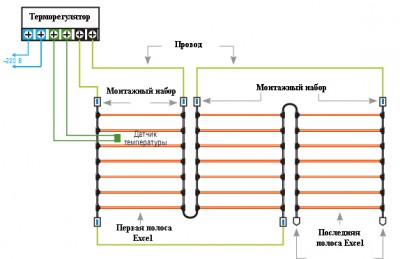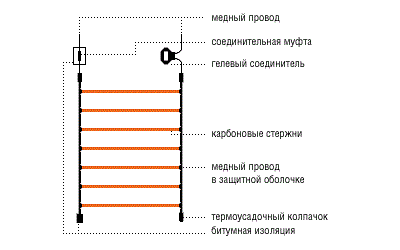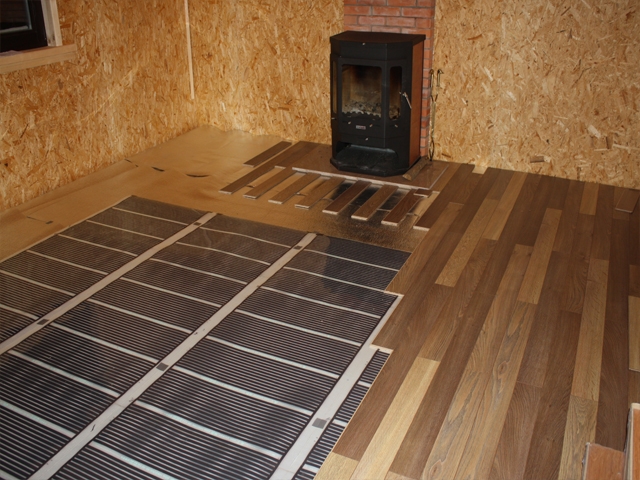Carbon floor heating: specifics of the system device and installation example
Carbon floor heating is an innovative option for creating space heating and open spaces. It is based on the use of an infrared heater, in which graphite-silver rods play the role of a heating element. They are connected in parallel with each other using an increased security cable.
The main functional advantages of this solution:
- Possibility of use, both as the main and as a comfortable heating;
- "Living warmth";
- Low degree of load on the floors;
- Profitability
- Possibility of shutdown in the winter;
- It does not require the allocation of a special room for the boiler room;
- Efficiency over the life of the entire structure;
- Intolerance to corrosive processes;
- Suitable for flooring all types without exception;
- It is mounted even on large areas.
It can be safely noted that there are practically no restrictions on the use of this system. Currently, therefore, can be heated:
- Private houses and cottages;
- Apartments
- Balconies, verandas and loggias;
- Hotels, motels, hotels;
- Industrial premises.
Important! This heating system is fire and explosion proof. It is great for heating waterlogged rooms and does not generate electromagnetic radiation.
Description of system installation technology
For the installation of carbon fiber underfloor heating does not need special skills. If desired, all the work can be done independently. The entire installation process can be divided into the following stages:
- Preparation of the necessary materials: carbon mat, thermostat-thermostat, couplings, bitumen insulation, corrugated tube, electrical wiring set, heat-reflecting material;
- Determination of the area and surface configuration on which the laying of the warm floor is planned;
- Cleaning and preparing the base of the floor for laying heat-reflecting material;
- Laying a heat-reflecting layer;
- Preparation on the floor surface of a place for laying a floor temperature sensor, which is laid in a corrugated tube;
- Unfolded carbon mat. The stripes are distributed evenly over the allotted surface and are connected to each other;
- Carbon mat is fixed using masking tape;
- The temperature regulator is installed;
- Checks the correct connection of carbon elements;
- The system is connected to the thermostat;
- Mounted corrugated tube for floor sensor;
- The floor sensor is inserted and connected to the thermostat;
- The temperature controller is connected to the mains;
- The carbon mat is turned on, its performance and reliability are checked;
- A cement screed 2-3 cm thick is evenly applied.

Attention! The carbon fiber underfloor, which is planned to be laid under the tile, requires the installation of a cement-sand screed, as well as the use of special tile glue.
Design features of carbon rods
A material based on polyester and polyethylene is used as a protective insulating shell of carbon rods.
Inside, the heating elements are filled with a carbon-polymer-based composite material. To connect them, a heat-resistant stranded wire of copper 2.5 mm thick is used, which is additionally protected by a 3 mm sheath.

Those who have tried the innovative heating system on their own experience claim that there is no alternative to it at the moment. A room with such heating is always dry and warm, while the natural humidity is not disturbed. Such conditions are provided by a technically unique intellectual system implemented on completely new principles for the design of heating elements. And carbon fiber underfloor heating is an economical way of heating a room, which is extremely important especially recently.
Mounting tutorial video
All currently available carbon floor models on the market are accompanied by detailed installation and operating manuals. The consumer can only show a little patience and diligence, and you can forget about the problems with heating for a long time.



5 comments